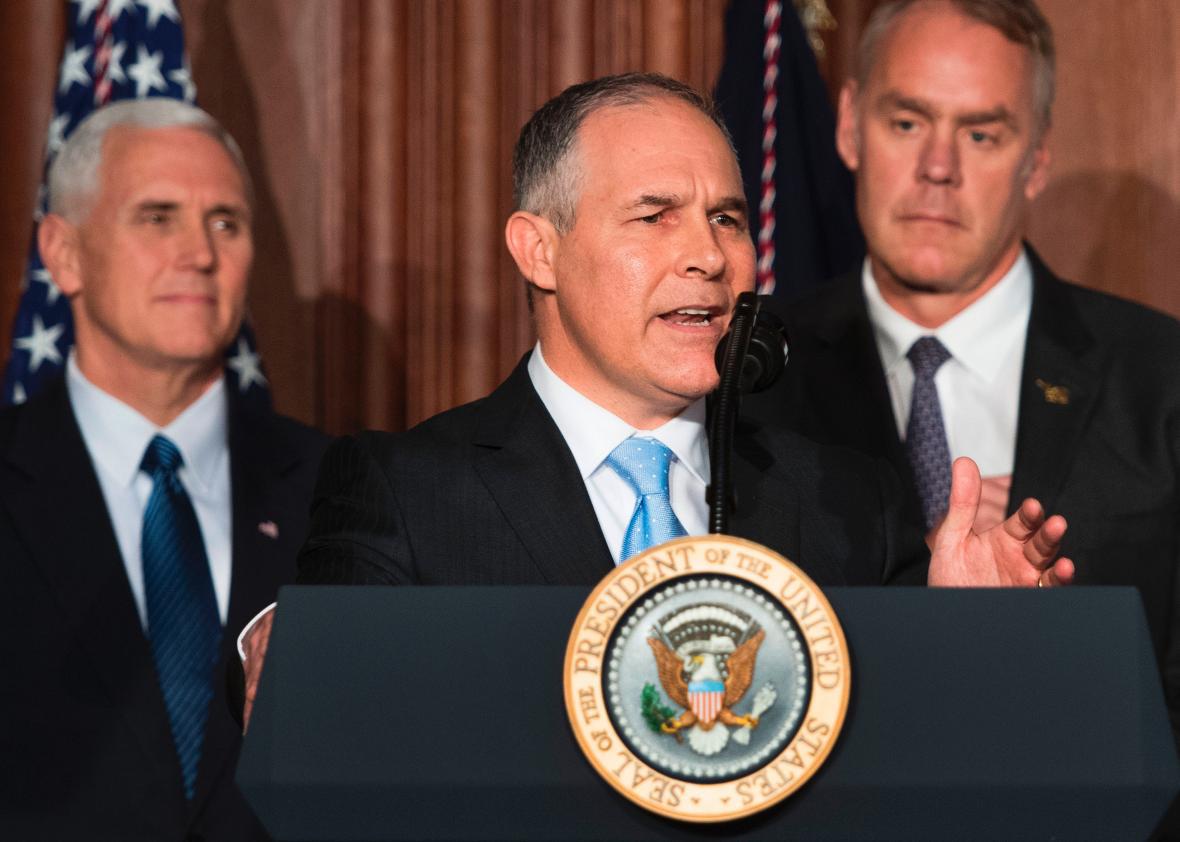EPA Administrator Scott Pruitt is not a big fan of science, particularly that of the agency he now heads. And late Wednesday, that hostility brought progress toward a ban of the pesticide chlorpyrifos on American farms planned by the Obama administration to a halt. From the New York Times:
The ruling by Mr. Pruitt in one of his first formal actions as the nation’s top environmental official, rejected a petition filed a decade ago by two environmental groups that had asked that the agency ban all uses of chlorpyrifos. The chemical was banned in 2000 for use in most household settings but still today is used at about 40,000 farms on about 50 different types of crops, ranging from almonds to apples.
Late last year, and based in part on research conducted at Columbia University, E.P.A. scientists concluded that exposure to the chemical that has been in use since 1965 was potentially causing significant health consequences. They included learning and memory declines, particularly among farm workers and young children who may be exposed through drinking water and other sources.
A federal court, prompted by legal action by environmental groups, had ordered the EPA to come to a decision about whether to ban the pesticide by the end of March. Pruitt’s move constitutes a “final agency action” that could prevent the EPA from reconsidering chlorpyrifos until 2022.
Is chlorpyrifos dangerous? The data seems to at least suggest it is. In fact, the EPA’s previous ban, preventing indoor use of the pesticide, helped create pretty ideal conditions for researchers to study the effects of the chemical, as explained by NPR’s Dan Charles:
While the study was going on, the ban on indoor uses of chlorpyrifos came into effect. So over the course of those years, scientists were able to gather data on children who had been exposed to very different levels of the pesticide.
They found that exposure to chlorpyrifos caused small but measurable differences in brain function. At age 7, the average IQ of children who had been exposed to high levels of chlorpyrifos was a few percentage points lower than children who hadn’t been exposed to much of the chemical at all. Other studies showed that some people are much more vulnerable to chlorpyrifos because of their genetic makeup.
The studies suggested that this chemical was more dangerous than people had previously realized.
In a statement explaining his rejection of the ban, Pruitt criticized findings the EPA had previously endorsed: “By reversing the previous Administration’s steps to ban one of the most widely used pesticides in the world, we are returning to using sound science in decision-making—rather than predetermined results.” It’s not entirely clear why Pruitt believes the old findings were predetermined, or why he seems to believe the chemical is safe.
The EPA’s recently updated page on the health risks of chlorpyrifos still concedes that evidence suggests residue of the pesticide could exceed the levels the law allows to remain on food. The EPA currently mandates that “no harm will result” from the maximum residue levels the EPA sets. “Based on current labeled uses,” it reads, “the revised analysis indicates that expected residues of chlorpyrifos on food crops exceed the safety standard under the Federal Food, Drug, and Cosmetic Act (FFDCA).” That means Pruitt’s EPA will continue to review chlorpyrifos, though this move suggests he might not take the results that seriously either.
Unsurprisingly, Dow Agrosciences, which sells chlorpyrifos, applauded Pruitt’s move: “This is the right decision for farmers who, in about 100 countries, rely on the effectiveness of chlorpyrifos to protect more than 50 crops.”
